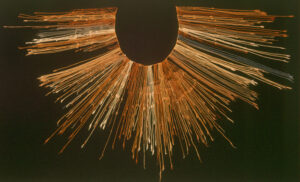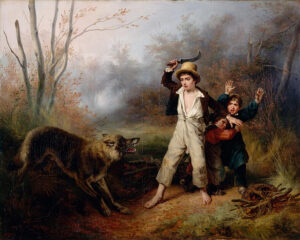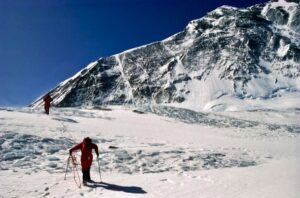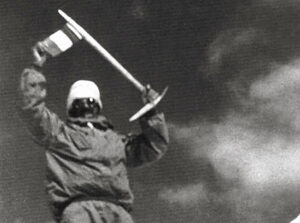William Drummond Stewart did not conquer lands of the American West for a President, nor did he wish to discover new species. What drew him to the West? While expeditions like those of Lewis and Clark and John C. Fremont had scientific or military goals, Stewart’s was simply…to go on an epic lad’s trip.
Background
Stewart was born in Murthly Castle in Scotland, and his father was a Scottish laird. The Stewarts came from a long line of barons and were influential in politics and the military. While records of his childhood seem to be lost, his adolescence and adulthood are very much documented.
When he was 17, his father bought him a position in the army for £700. It is unclear why he did so. Buying one’s way into a high position indicates some inadequacy on Stewart’s part that his family saw the need to step in and help. £700 was a hefty fee back then.
Stewart enjoyed both action and flamboyance. Initially, he was assigned to the Sixth Dragoon Guards. This bored him, and he requested a transfer to the 15th Kings Hussars, which were in the thick of fighting the Napoleonic Wars. He and his unit fought valiantly at Waterloo. Their illustrious uniforms made other officers jealous, which Stewart enjoyed thanks to his desire for the spotlight.

William Stewart at Waterloo. Painting by John Watson Gordon
A double life
Stewart’s outward persona as a charismatic, accomplished military officer and nobleman hid his true nature. He was secretly gay. Historians do not know for how long he conducted clandestine same-sex relationships, or if he ever did before the 1830s. He had a heterosexual relationship with a servant named Christian Marie Batterby in Scotland, with whom he had an illegitimate son. He never married her but took care of his son and the mother financially.
Historian William Benemann, author of Stewart’s autobiography Men in Eden: William Drummond Stewart and Same-Sex Desire in the Rocky Mountain Fur Trade suggests that this relationship with Batterby was Stewart’s way of trying to “cure” himself. However, in later years, he lifted the veil and engaged in a decade-long relationship with a man.
The pleasure trip
Stewart enjoyed travel and was a great admirer of poet Lord Byron and his journeys throughout Greece and Turkey in the 1800s. The East and its exoticism appealed to him, sending him on a pilgrimage inspired by Byron’s travels. But his eyes then turned to an entirely different world: the American West.
Westward expansion was now kicking into high gear. Manifest Destiny and the romanticization of unknown lands drew restless souls to explore trade and new frontiers. The indigenous cultures already in the area both scared and fascinated people.
In 1833, Stewart decided to go to North America and see all these new things for himself. In St. Louis, Missouri, he joined a group of mountain men heading to Wyoming for a rendezvous. This was an annual fur traders’ event where explorers, cartographers, and men of all stripes met, networked, hunted, and conducted business. It included dancing, singing, cooking together, and sports. Essentially, the rendezvous was a guys’ trip of epic proportions.

Canoeing the rapids on the way to a rendezvous. Painting by Frances Anne Hopkins
Stewart stayed in the West for several years, attended many such events until the 1840s, and met many intriguing individuals. They include naturalist Kirk Townsend, missionaries Daniel and Jason Lee, artist Alfred Jacob Miller, Baptiste Charbonneau, the son of Sacagawea, of Lewis and Clark fame. He also met a mountain man named Antoine Clement, with whom he spent a decade in a relationship.
After his father died, his brother inherited it and recklessly incurred great debts. However, his brother died, thereby passing on the title and burden of debt to him. Stewart had to go back to Scotland for a time to officially become a baron. But he disliked the responsibility and eventually returned to the United States.
During these various rendezvous, Stewart and his friends traveled over the Big Horn Mountains, Taos, the Green, Columbia, and New York Rivers, Washington, Fort Vancouver, the Rockies, New Orleans, and many other locations across the country.
First luxury travel
It was no secret that Stewart liked to travel in style. He had hedonistic tendencies and did his wilderness explorations as luxuriously as possible. No doubt this was a consequence of his aristocratic upbringing.
Accounts described his expeditions as “pleasure trips,” a new concept at the time. Leisure travel was very rare, but when word got out about these entertaining fur trade rendezvous, it seemed to start a trend. One explorer wrote how “some professional gentlemen come on the trip for pleasure, some for health…doctors, lawyers, botanists…men of nearly all professions.”
One member of the expedition party described what sounded like first-class treatment at Fort Jackson. “Our baggage was brought and put into a spacious room without consulting us…fine muskmelons and watermelons and apples were set before us…”
Despite their high-end nature, Stewart’s pleasure trips included many exciting events: hunting buffalo, and brushes with bears and with Native American tribes. Despite or because of the dangers, Stewart loved the West. To capture his beloved land in a different light, he hired an artist named Alfred Jacob Miller to tag along and give the public a new perspective on the frontier.
Legacy
Stewart is not as well-known as many of his contemporaries. While the Museum of the Mountain Man in Pinedale, Wyoming gives him some attention, only a few books out there cover him. Most sources mention him only in passing as part of Scotland’s general involvement in the American fur trade. His legacy lives on mostly through the paintings of Alfred Jacob Miller.
This is most likely because Stewart’s homosexual lifestyle was taboo until recently and his travel style was more hedonistic than pioneering. It is unclear if the fur traders respected him or not. Kirk Townsend, the naturalist, described Stewart as “an English gentleman of noble family, who is traveling for amusement and in search of adventure.” The term “for amusement” sounds somewhat disparaging today.
Nevertheless, one individual has set out to uncover Stewart’s enigmatic past. Historian William Benemann has meticulously scoured documents and obscure letters in the Bancroft Library at UC Berkeley to piece together the details of his secret lifestyle.
He believes that the American West was both a refuge and an escape for Stewart. Its remoteness allowed him to live the life he always wanted. According to Benemann, this was the case for many with same-sex desires. The mountains gave men a more secretive space to conduct their affairs away from public eyes.
Interest groups on Facebook and other forms of social media do not mention his contributions to travel at all. But LGBTQ blogs and Reddit posts are starting to discover his story and trying to shed light on this lost part of American fur-trading history.






